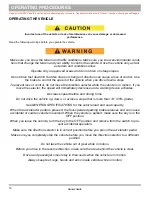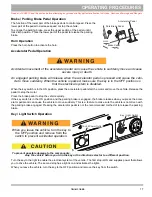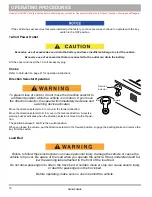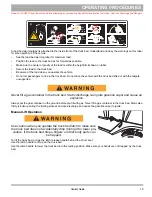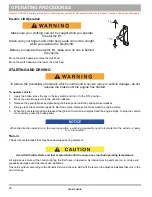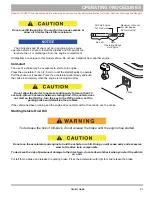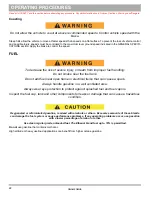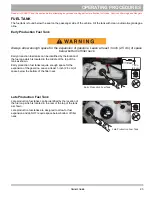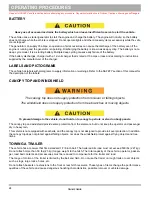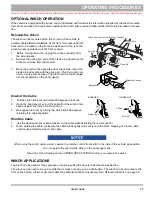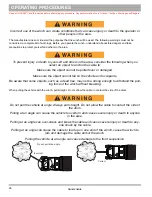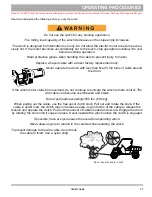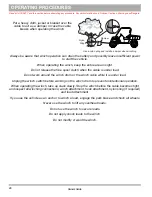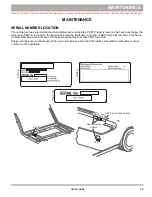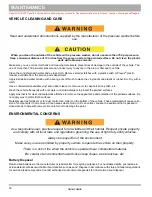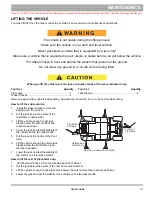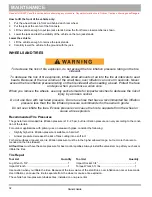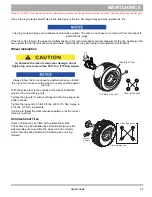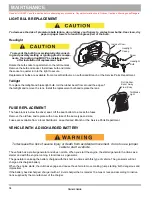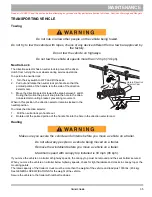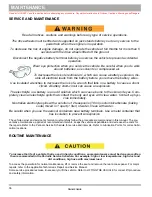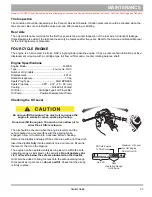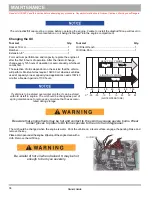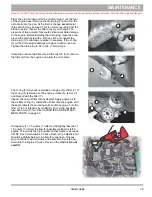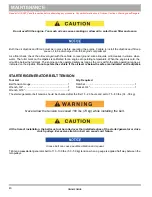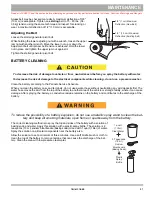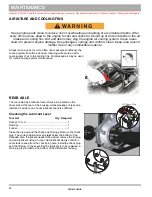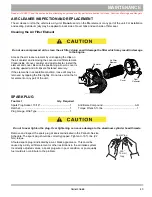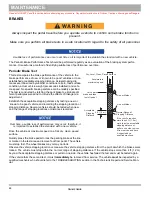
30
MAINTENANCE
Read all of SAFETY and this section before attempting any procedure. Pay particular attention to Notices, Cautions, Warnings and Dangers.
Owner’s Guide
VEHICLE CLEANING AND CARE
Read and understand all instructions supplied by the manufacturer of the pressure washer before
use.
When you clean the outside of the vehicle with a pressure washer, do not use more than 700 psi pressure.
Keep a minimum distance of 12 inches from the spray nozzle to the painted surface. Do not clean the plastic
parts with abrasive solvents.
Make sure you use correct methods and cleaning materials to prevent risk of damage to the outside of the vehicle. The
use of more than 700 psi water pressure can cause injury to anyone in the area or damage to vehicle.
Clean the windshield with water and a clean cloth. Remove small scratches with a plastic polish or Plexus
®
plastic
cleaner, available from the service parts department.
Apply a soap and water solution with a sponge or soft brush to clean the vinyl seats and plastic or rubber trim. Dry with a
cloth.
Use a commercially available vinyl and rubber cleaner to remove oil, tar, asphalt, shoe polish, etc.
Wash the vehicle frequently with cool water and mild detergent to protect the painted surfaces.
Apply wax that is for clear coat automotive finishes to improve the appearance and protection of the painted surfaces. Do
not apply wax to matte finish surfaces.
Materials used as fertilizers or for dust control can collect on the bottom of the vehicle. These materials will cause corro-
sion of components if not removed. Clean areas where mud or dirt can collect. Loosen the sediment that is packed in
closed areas to help with removal. Be careful not to damage the paint.
ENVIRONMENTAL CONCERNS
As a responsible user, practice respect for all wildlife and their habitat. Respect private property
and comply with all local laws and regulations governing the use of light duty utility vehicles.
Always be respectful of the environment.
Make sure you are permitted by property owners to operate the vehicle on their property.
There is a risk of fire when the vehicle is operated near combustible material.
Be careful of environmental hazards like steep slopes, tree branches, etc.
Battery Disposal
Return used batteries to the manufacturer or lead smelter for recycling purposes. For neutralized spills, put residue in
acid-resistant containers with absorbent material, such as sand. Dispose in accordance with state and federal regulations
for acid and lead compounds. Contact authorized environmental agencies for information about disposal.

